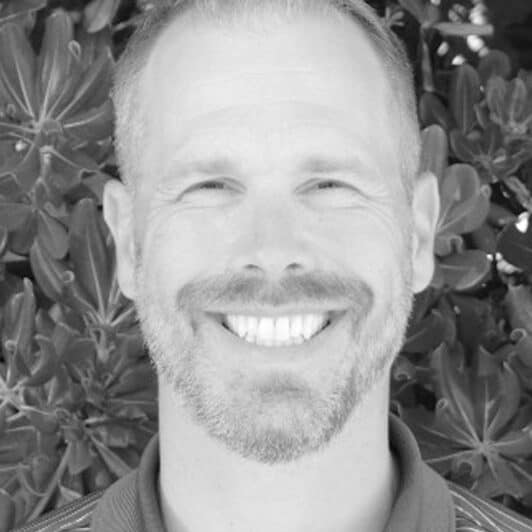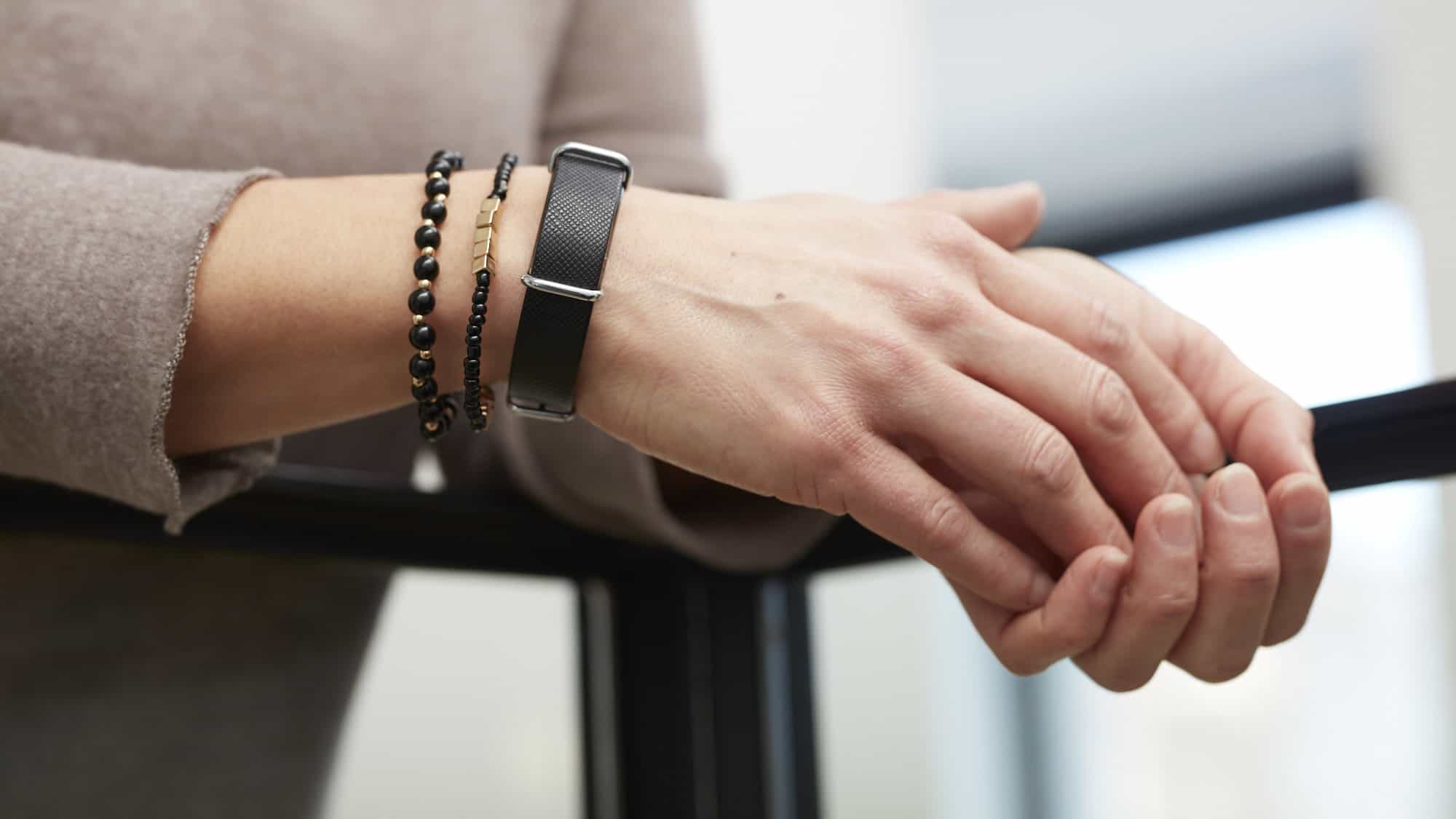Aktiia’s 24/7 blood pressure monitoring system, the culmination of more than 15 years of research and development, has finally arrived on the market. It will improve the health of millions of people with hypertension, which is why Verve Ventures has backed the startup since its seed round. In this interview, Aktiia’s CEO Michael Kisch elaborates on the impact this world premiere will have, why he wears the bracelet next to his Apple watch, and what it feels like to lead a startup from another continent.

CEO of Aktiia
Michael Kisch is CEO of Aktiia. He joined the startup in August 2020 and is based in San Francisco. Michael has been a member of the founding teams of 3 digital and financial health startups, has raised over USD 50 million from Silicon Valley venture capital firms, and hired hundreds of people.
Aktiia’s new bracelet looks like a slim fitness tracker. What does it do?
Aktiia’s bracelet is the first wrist-worn wearable on the market that accurately measures blood pressure using optical sensors. Fitness trackers are capable of measuring heart rate or oxygen saturation in the blood, but blood pressure measurement on the wrist is hellishly difficult. And because blood pressure is such an important vital sign, the regulatory hurdles to get a product approved are very high. Aktiia’s product is the result of 15 years of research by the two founders, both Ph.D. scientists who have cracked the code of how to do it. We’ve received the approval as a class 2a medical device, the so-called CE mark, in late 2020.
Who will buy this bracelet?
It is designed for people that are serious about their cardiovascular health. For those that have been diagnosed with high blood pressure, it is a dramatically more elegant solution than the ones that are available right now. It measures blood pressure 24/7, day and night and displays the results in an easy-to-use app. You only have to charge the device every 10 days and can also share and discuss the measurements with your physician.
Where will it be available?
We’re taking pre-orders on our website for customers with UK addresses starting now and will begin shipping in February. The next countries where it will be available online are France, Germany and Switzerland. The CE mark gives us the possibility to sell in all European countries as well as other markets such as Canada, Australia, New Zealand and Brazil, for a total market with a population of more than 1 billion people.
Why did you opt for the direct-to-consumer channel?
Current blood pressure monitors are mostly sold online and in stores. Our first channel will be direct to consumer and it will allow us to engage with early adopters and generate revenue traction fast. But the people that will buy it online, are comfortable with technology and have a strong wish to actively monitor their health. The second phase of our go-to-market strategy is reaching out to physicians and other actors in the health system. With doctors that recommend or prescribe the bracelet to their patients, we’ll be able to address an even larger population. But this is also a slower channel to develop.
How hard will it be to convince doctors that Aktiia’s bracelet is actually useful?
Most cardiologists would agree that continuous measurement of blood pressure is more useful than intermittent measurements. There is a large body of research that confirms the utility of what we enable. But we make even more possible, namely, the persistent measurement over months and years and across large populations. This has never been done before in an accessible, elegant way, and I’m sure this will allow many novel insights that change the way that hypertension is diagnosed and ultimately managed.
The bracelet is quite discreet, where is the secret hidden that makes it useful?
The hardware itself is made of standard optical sensors. The magic happens in the cloud where our algorithms reside that make sense of the input from the sensors. Initially, the Aktiia 24/7 monitoring service is only available with our hardware, but over time, we’ll transition to making it available via other companies wearable devices. We’d love to see Aktiia’s technology made available to as many people as possible including those who have been diagnosed with hypertension and those that are currently unaware that they may have high blood pressure. And from the conversations we had, I can tell that there is intense interest from several manufacturers. This would bring even more public health benefits, because a large part of the hypertensive population, an estimated 50%, is not diagnosed with it. This undiagnosed population may not buy an Aktiia device, but if they own a fitness tracker or smartwatch that uses our tech, they will be made aware of their condition.
I see you wear an Apple Watch, do you wear the Aktiia bracelet on the left arm too? And do people ask you what it is?
It’s so slim that I can wear it next to the watch. And the few people I met recently during the pandemic are well aware of what I do, so I haven’t gotten many questions on it yet. Which is kind of our design goal. We want the bracelet to be attractive and valuable looking, but not draw as much attention to it as a smartwatch for example.
You’re in the US and you joined the startup with the majority of the team in Neuchatel, Switzerland, during Covid. How do you feel about that?
Since they’re 9 hours ahead, I start my day at about 6 am west coast time. My mornings are filled with calls and my afternoons can be very quiet which allows me to think through problems and get my work done. And honestly, this rhythm is actually great for productivity and I’m not going to change it when I get back to the office. The team is great and they’ve delivered on time, which is unique in the world of a start-up. But it’s weird that I never met anyone from the team in person, I don’t know who is short or tall, I’ve only seen their faces on the screen. Meetings are the same in the meeting room or on Zoom, but it’s the accidentally bumping into someone that is lacking over distance. I look forward to coming over to Switzerland one day.
Speaking of the US, when do you expect approval by the FDA so you can enter the US market?
We expect the FDA approval in 2022. Until then, as our user acquisition scales, we’ll gather around 25-30 million unique blood pressure readings in just our first year of business. And this will allow us to do fascinating things. First, we can increase the accuracy of the diagnosis. An estimated 30% of people with hypertension are initially misdiagnosed because of a lack of representative measurements. We measure 100 times more data points per week than traditional methods. Second, we make personalized therapy possible by understanding the blood pressure pattern over time. This is especially relevant for patients whose blood pressure doesn’t drop during the night, as they’re twice as susceptible for a heart attack as others. Seeing the 24h cycle allows you to prescribe medication at different times of the day, for example. The third point is that the patients are able to see the trend of their blood pressure in an app. This will allow them to get direct feedback on what activities and food are good for them, what kind of stress situation is bad for them, and adjust their behavior accordingly.

Written by
WITH US, YOU CANCO-INVEST IN DEEP TECH STARTUPS

Verve's investor network
With annual investments of EUR 60-70 mio, we belong to the top 10% most active startup investors in Europe. We therefore get you into competitive financing rounds alongside other world-class venture capital funds.
We empower you to build your individual portfolio.
More News
20.04.2020
Aktiia (Wearables): CHF 6m Series A
Aktiia has raised CHF 6 million from Redalpine, Translink Capital, and others. Verve Ventures contributed more than CHF 1 million to this round.
Startups,Innovation andVenture Capital
Sign up to receive our regular newsletter and learn about investing in technologies that are changing the world.


